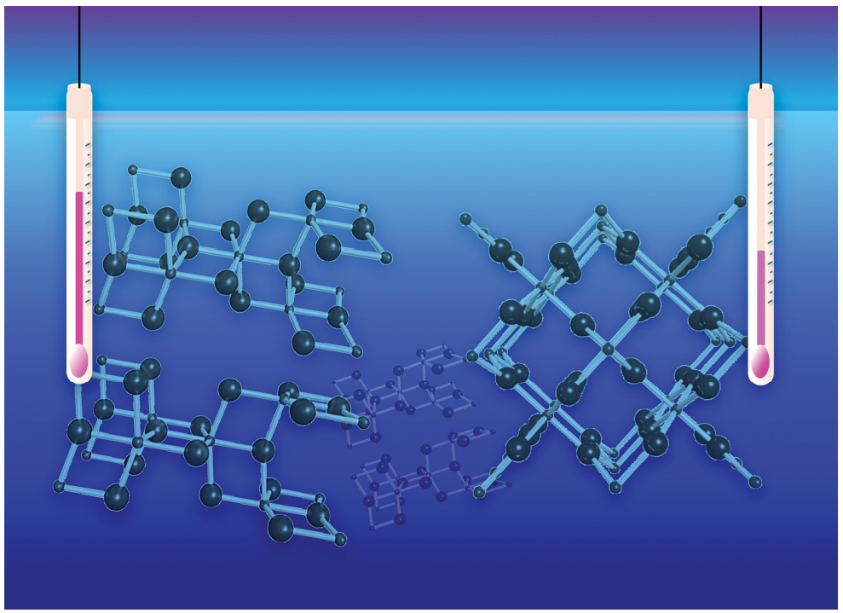Research Highlight: Publication in Chemical Communications and Selection for Back Cover(August 20, 2025)
2025.08.20
Associate Professor Kazuhiro Manseki (Department of Chemistry and Bioengineering, Materials Chemistry Course), Shinapol Toranathumkul (Graduate School of Engineering), Satoka Wada, Daisuke Takemoto, Ryoma Yasuda (Graduate School of Science and Technology), and alumnus Naohide Nagaya recently published their research in Chemical Communications (Royal Society of Chemistry, UK), and their work was also featured on the journal's back cover. Emeritus Professor Takashi Sugiura also contributed to this research.
Paper Title: Crystal phase-directed growth of rutile/anatase TiO₂ heterojunctions via in situ stepwise chemical bath deposition below 80 ℃
Authors: Kazuhiro Manseki*, Shinapol Toranathumkul, Satoka Wada, Naohide Nagaya, Daisuke Takemoto, Ryoma Yasuda, and Takashi Sugiura
(*Corresponding Author)
Paper URL: https://pubs.rsc.org/en/content/articlelanding/2025/cc/d5cc03571f
Titanium dioxide (TiO₂) is widely recognized for its applications as a white pigment and photocatalyst. It is also well known in electrochemistry for its role in the Honda-Fujishima effect (solar water splitting) and its use in dye-sensitized solar cells. Research on TiO₂'s potential to facilitate the next generation of renewable energy technologies is advancing rapidly worldwide.
In many applications of functional materials, thin-film fabrication is a critical step. Our laboratory has developed an innovative method for producing TiO₂ films that combines different crystal phases (same chemical composition but different arrangements of those atoms) to create heterojunctions. These heterojunctions deposited on solar cell electrodes function to improve electron transport properties, which is crucial for device performance.
A key feature of our method is that it results in the selective growth of different TiO₂ crystal phases (as seen in the drawing below) within a single solution by changing the temperature in a stepwise manner using a range lower than 80 ℃. By adjusting the reactivity of titanium precursors with only a ~10 ℃ temperature difference, we achieved continuous deposition of different crystal phases in one solution, which was previously very challenging. With transparent glass electrodes used in solar cells, we can control the deposition of TiO₂ crystal morphology at scales smaller than 10 nanometers.
Titanium is an abundant element and TiO₂ is chemically stable, making this method promising for practical applications. This technique provides a foundation for producing flexible perovskite solar cells and artificial photosynthesis systems at low temperatures. In our laboratory, alongside the design and synthesis of inorganic materials, we are also working to enhance the performance of high-efficiency devices using our knowledge of electrochemistry. Interestingly, the operating principles of devices such as dye-sensitized solar cells share similarities with the light-harvesting processes found in green plants. By deepening our understanding through the lens of natural science, we aim to contribute to both research and education, using nature as a source of inspiration for future innovation.
*Traditional TiO₂ crystallization process often requires high temperatures in synthesis above 100 ℃ or heat treatment around 500 ℃.
Gifu University Press Release:
https://www.gifu-u.ac.jp/news/research/2025/08/entry05-14518.html
EE Times Japan - Top Stories:
"Promising for Next-Generation Solar Cells: Continuous Deposition of Different TiO₂ Crystal Phases in a Single Solution"
https://eetimes.itmedia.co.jp/ee/articles/2508/08/news036.html
Manseki Laboratory HP: https://www1.gifu-u.ac.jp/~pcl/
Chem. Commun. Outside Back Cover (by Manseki):
https://pubs.rsc.org/en/content/articlelanding/2025/cc/d5cc90281a

Illustration: Schematic showing the selective deposition and connection of different TiO₂ crystal phases (e.g., rutile, anatase) through controlled temperature in aqueous solution.




















